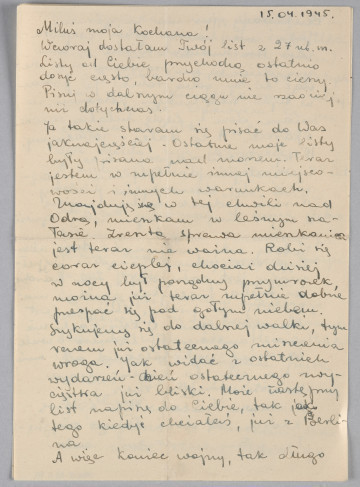Certificate of evacuation to Poland by Maria Pisuk
1946
Museum of the history of Polish Jews
Part of the collection: Story of the Pisiuk family from the Vilnius Region
Marta Frączkiewicz
Author / creator
Dimensions
cały obiekt: height: 11,5 cm, width: 9,2 cm
Technique
Moulding, printing, painting
Creation time / dating
Creation / finding place
Owner
POLIN Museum of the History of Polish Jews
Identification number
Location / status
1946
Museum of the history of Polish Jews
1945
Museum of the history of Polish Jews

1945
Museum of the history of Polish Jews
DISCOVER this TOPIC
National Museum in Lublin
DISCOVER this PATH
Educational path